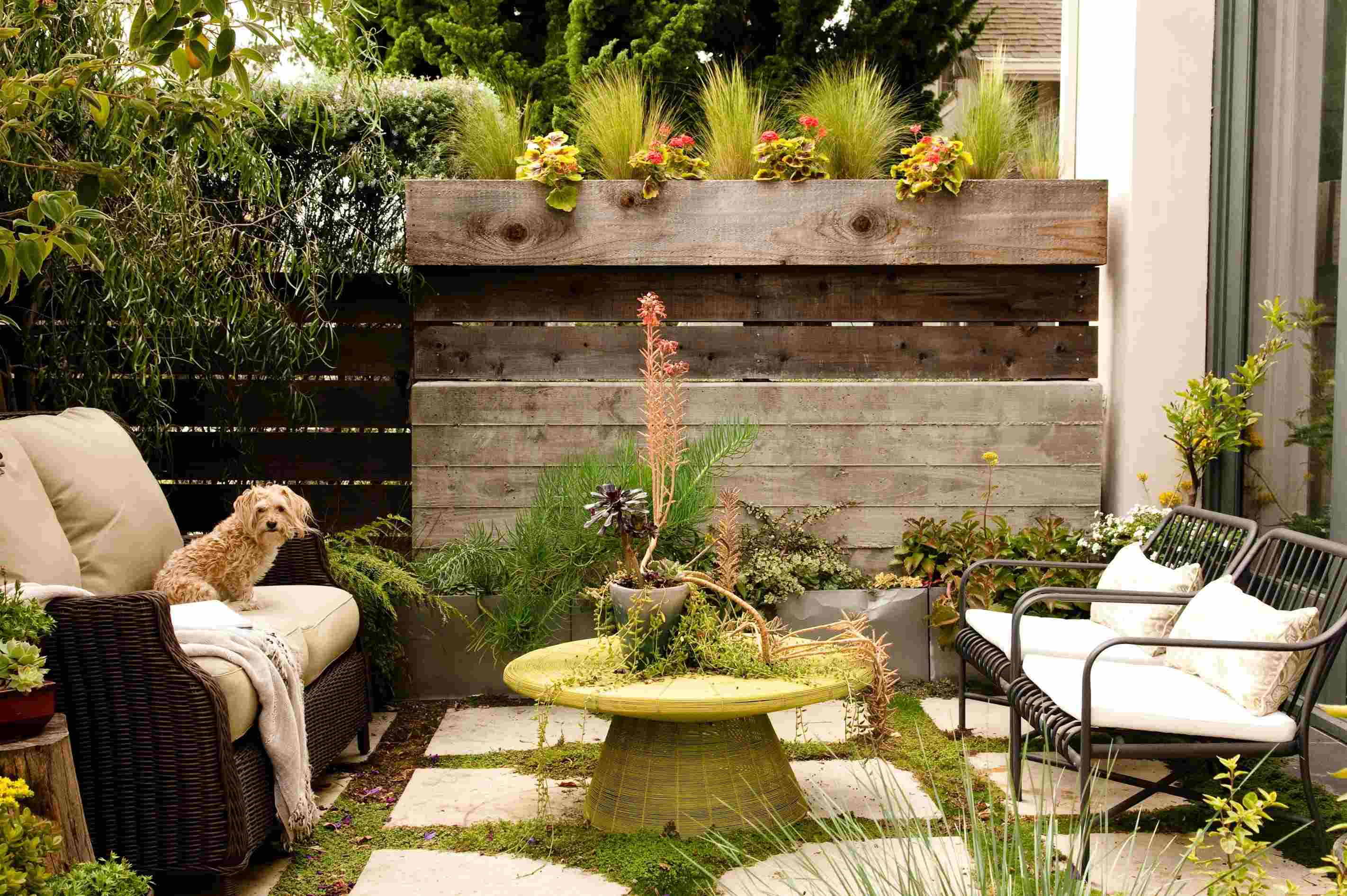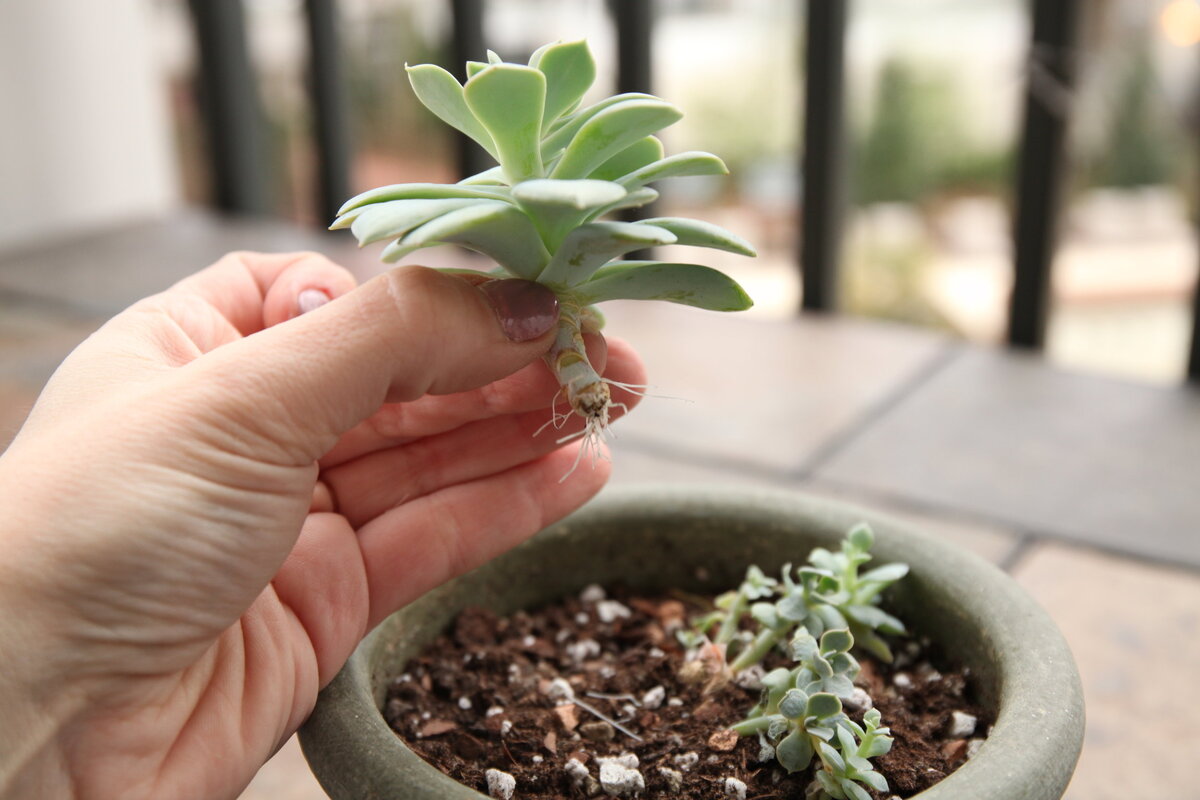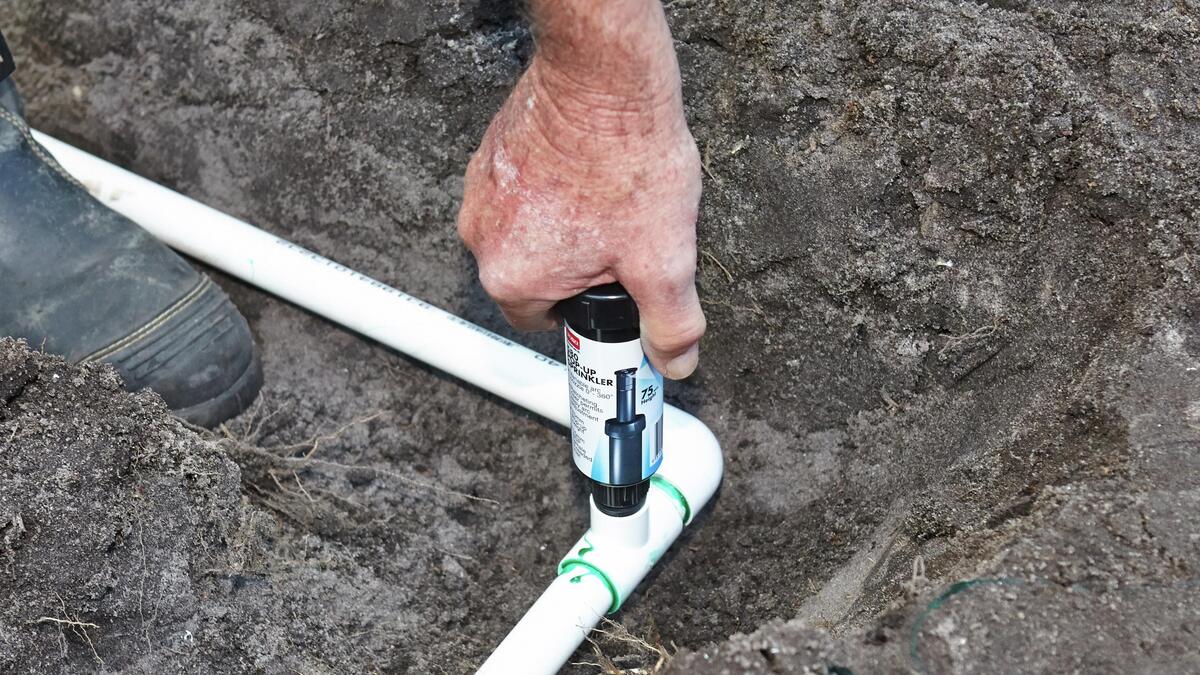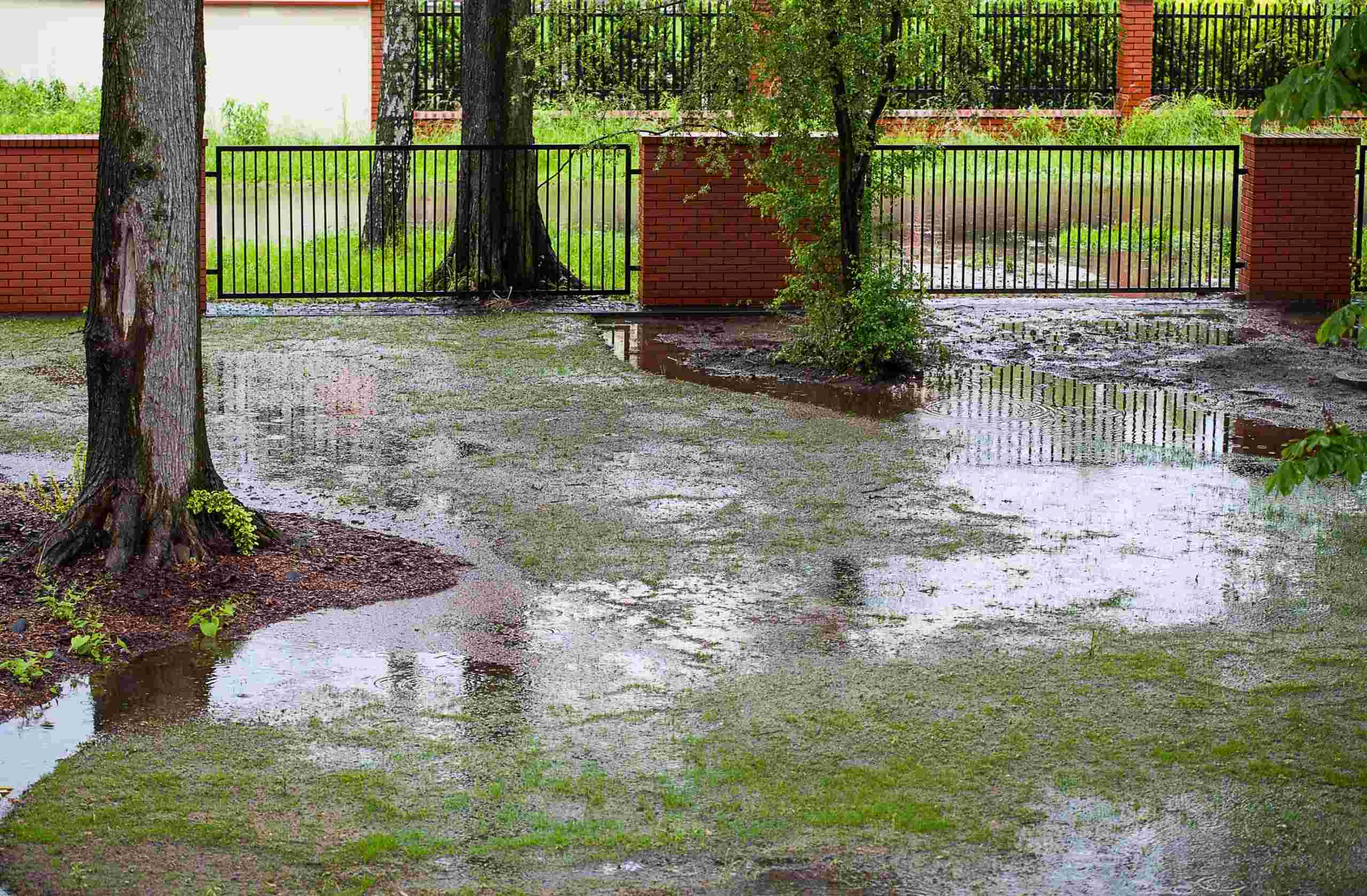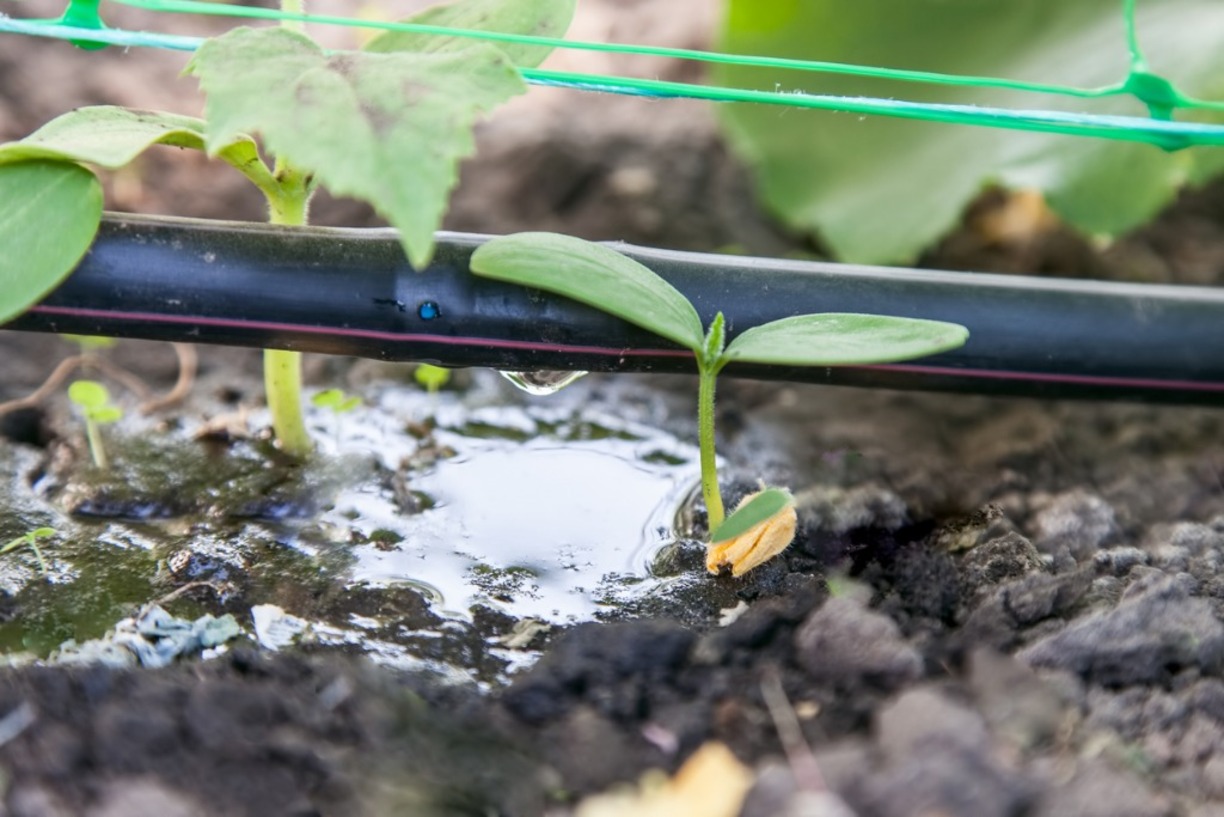Home>Gardening Tips and Tricks>Problem Solving>How To Fix Compacted Soil Lawn


Problem Solving
How To Fix Compacted Soil Lawn
Published: February 13, 2024
Learn how to solve the problem of compacted soil in your lawn with effective techniques and solutions. Improve soil quality for a healthier and greener lawn.
(Many of the links in this article redirect to a specific reviewed product. Your purchase of these products through affiliate links helps to generate commission for Chicagolandgardening.com, at no extra cost. Learn more)
Table of Contents
- Introduction
- Why Compacted Soil is a Problem for Your Lawn
- Signs of Compacted Soil
- The Importance of Fixing Compacted Soil
- Step-by-Step Guide to Fix Compacted Soil in Your Lawn
- Tools and Equipment Needed
- Aeration
- Topdressing
- Soil Amendments
- Regular Lawn Maintenance Practices
- Benefits of Regularly Addressing Compacted Soil
- Conclusion
Introduction
Welcome to our guide on how to fix compacted soil in your lawn. If you’ve noticed that your grass isn’t as lush and healthy as it used to be, or if water is pooling on the surface instead of being absorbed, compacted soil may be to blame. Compacted soil occurs when the particles become tightly packed, leading to poor drainage, limited air circulation, and restricted root growth. This can significantly impact the overall health and appearance of your lawn.
Compacted soil is a common issue that many homeowners face, but the good news is that it can be fixed. By taking the time to address this problem properly, you can restore the vitality of your lawn and create an ideal environment for your grass to thrive.
In this comprehensive guide, we will discuss the signs of compacted soil, the importance of fixing it, and provide you with a step-by-step guide on how to remedy the issue. We will also cover the essential tools and equipment you’ll need for the job to ensure success.
Remember, fixing compacted soil is not a one-time task. It requires regular maintenance practices to prevent the problem from recurring. By following the steps outlined in this guide and implementing proper lawn care practices, you can rejuvenate your lawn and enjoy a healthy, green, and vibrant outdoor space for years to come.
Why Compacted Soil is a Problem for Your Lawn
Compacted soil can cause a multitude of problems for your lawn, impacting its overall health and appearance. When soil becomes compacted, it becomes dense and hard, making it difficult for roots to penetrate and absorb nutrients and moisture efficiently. This can lead to a weakened root system and stunted growth.
One of the main issues with compacted soil is poor drainage. When the soil is compacted, water is unable to percolate effectively, resulting in puddles and waterlogged areas on your lawn. This excess moisture can suffocate the roots, leading to root rot and other diseases. Additionally, compacted soil inhibits oxygen circulation, depriving the root system of the essential gas it needs to function optimally.
Another consequence of compacted soil is reduced nutrient availability. The compacted particles limit the root’s access to vital nutrients, hindering their uptake. As a result, the grass may appear yellowed, weakened, and prone to pests and diseases.
Compacted soil can also impede the growth of beneficial microorganisms in the soil. These microorganisms play a crucial role in breaking down organic matter and releasing essential nutrients for the plants. Without a healthy population of microorganisms, the soil’s fertility decreases, further impacting the overall health of your lawn.
In addition to the direct effects on the grass, compacted soil can also lead to an uneven and unsightly lawn surface. The hard soil prevents the grass from establishing a strong root system, resulting in patchy areas and bare spots. Furthermore, mowing becomes more challenging on compacted soil, as the hard surface can cause the lawnmower blades to scalp the grass, leading to further damage and stress.
Overall, compacted soil hinders the proper growth and development of your lawn, making it more susceptible to diseases, pests, and environmental stressors. By addressing compacted soil, you can create a healthier and more resilient lawn that can withstand various challenges and maintain its lush, green appearance.
Signs of Compacted Soil
Identifying the signs of compacted soil in your lawn is essential in order to address the issue promptly. While compacted soil may not always be immediately visible, there are several telltale signs that can indicate its presence. By paying attention to these signs, you can take the necessary steps to remedy the problem and restore the health of your lawn.
One of the most noticeable signs of compacted soil is poor water drainage. If you notice that water tends to pool on the surface of your lawn rather than being absorbed into the soil, it is a strong indication of soil compaction. The compacted soil prevents proper percolation, causing the water to sit on the surface and potentially create muddy areas.
Another sign to look out for is the presence of bare or thinning patches on your lawn. Compacted soil restricts the root system’s ability to establish and grow, leading to weak and shallow roots. As a result, grass may struggle to grow in certain areas, resulting in bare spots or thinning patches that are slow to recover.
Pay attention to the overall health and color of your grass. If you notice that the grass appears dull, yellowed, or lacks vibrancy, it could be a sign of compacted soil. Compacted soil limits the availability of essential nutrients and oxygen to the grass roots, causing the grass to become stressed and less healthy. This can lead to a lackluster and unhealthy-looking lawn.
Difficulty in driving stakes or inserting a garden fork into the soil is another indication of soil compaction. If you find it challenging to penetrate the soil surface with a stake or garden fork, it suggests that the soil particles have become tightly packed and compacted. This resistance to penetration is a clear sign that the soil structure needs attention.
Lastly, take note of any increased weed growth in your lawn. Weeds are often opportunistic and can take advantage of the weakened and stressed grass in compacted soil. If you notice an influx of weeds in your lawn, it could be stemming from the compacted soil issue.
By being mindful of these signs, you can diagnose the presence of compacted soil and take the necessary steps to rectify the problem. Regular observation and maintenance of your lawn will help keep your grass healthy and resilient, ensuring a vibrant and thriving outdoor space.
The Importance of Fixing Compacted Soil
Fixing compacted soil is crucial for maintaining a healthy and vibrant lawn. Ignoring the issue can lead to a range of problems that can affect the overall health and appearance of your grass. Understanding the importance of fixing compacted soil will motivate you to take the necessary steps to remedy the problem.
One of the main reasons to address compacted soil is to promote proper root growth. Compacted soil restricts the penetration of roots, hindering their ability to delve deep into the soil and access essential nutrients and water. By fixing compacted soil, you create a loose and aerated environment that encourages healthy root development, enabling your grass to establish a stronger and more robust root system.
Fixing compacted soil also improves water drainage. Compacted soil prevents proper percolation, leading to water pooling on the surface. This excess moisture can drown the roots and create a breeding ground for diseases and pests. By addressing compacted soil, water can penetrate more effectively, reducing the risk of waterlogging and ensuring that the grass receives the right amount of moisture.
Furthermore, proper soil aeration through fixing compacted soil helps restore the balance of oxygen in the soil. Compacted soil restricts the circulation of oxygen, depriving the roots of this vital element. By improving soil aeration, you enhance the availability of oxygen to the roots, fostering a healthier and more resilient lawn.
Another benefit of fixing compacted soil is the improved uptake of nutrients. Compacted soil limits the access of roots to essential nutrients, resulting in nutrient deficiencies and weak grass growth. By remedying the compaction, you create a more favorable environment for nutrient absorption, enhancing the overall health and vitality of your lawn.
Fixing compacted soil also promotes the growth of beneficial microorganisms in the soil. These microorganisms play a crucial role in breaking down organic matter and releasing nutrients that are essential for plant growth. By restoring the soil structure and promoting a healthy microbial population, you create a fertile and enriched soil environment that supports the growth of lush and healthy grass.
Overall, fixing compacted soil is essential for promoting the overall health and vigor of your lawn. It improves root growth, water drainage, oxygen circulation, nutrient uptake, and the presence of beneficial microorganisms. By addressing the issue of compacted soil, you can create a conducive environment for your grass to thrive, resulting in a lush, green, and beautiful lawn.
Step-by-Step Guide to Fix Compacted Soil in Your Lawn
If you’ve identified compacted soil in your lawn, it’s essential to take action to fix the issue and restore the health of your grass. Here is a step-by-step guide on how to remedy compacted soil:
- Aeration: Begin by aerating the soil using a lawn aerator or a garden fork. This process involves creating small holes in the soil to loosen the compacted particles. Insert the aerator or fork into the soil and gently rock it back and forth to create the holes. Repeat this process across the entire affected area, ensuring proper coverage.
- Topdressing: After aerating, spread a layer of compost or topsoil over the lawn. This topdressing helps improve the soil structure and adds organic matter to the soil. Use a rake to spread the compost or topsoil evenly, ensuring that it fills the holes created during aeration and covers the compacted areas.
- Soil Amendments: Consider adding soil amendments like gypsum or organic matter to further improve the soil’s structure and fertility. Gypsum helps break up clay soils, while organic matter adds essential nutrients and improves water retention. Follow the package instructions for the correct application rate and thoroughly incorporate the amendments into the soil using a rake or garden fork.
- Regular Lawn Maintenance Practices: To prevent soil compaction in the future, it’s crucial to practice regular lawn maintenance. Avoid heavy foot traffic on the lawn, as this can lead to compaction. Additionally, practice proper mowing techniques, such as not cutting the grass too short, as longer grass blades help shade and protect the soil from compaction. Regularly watering deeply and infrequently can also prevent soil compaction by encouraging deeper root growth.
Remember, fixing compacted soil is not a one-time solution. It requires ongoing maintenance and care to ensure long-term soil health. Regularly aerating, topdressing, and incorporating organic matter will help prevent soil compaction and maintain a lush and healthy lawn.
Tools and Equipment Needed
Fixing compacted soil in your lawn requires the use of specific tools and equipment to effectively address the issue. Here are the essential tools you’ll need:
- Lawn Aerator: A lawn aerator is a key tool for loosening compacted soil. There are various types of aerators available, including manual aerators and mechanical aerators, such as plug aerators or spike aerators. Choose the type that best suits the size of your lawn and the level of compaction.
- Garden Fork: If you don’t have access to a lawn aerator, a garden fork can be used as an alternative. A sturdy garden fork will help create holes in the compacted soil, allowing for better moisture and air penetration.
- Rake: A rake is essential for spreading topdressing materials evenly over the lawn. It helps level the soil and ensures proper coverage of compost or topsoil during the topdressing process. Choose a rake with sturdy tines that can easily move through the soil.
- Compost or Topsoil: Good quality compost or topsoil is needed for topdressing. Look for compost or topsoil that is well-aged, free from weed seeds, and rich in organic matter. The amount of compost or topsoil needed will depend on the size of your lawn and the depth of the compaction.
- Soil Amendments: Depending on the specific needs of your soil, you may require soil amendments such as gypsum or organic matter. Gypsum helps break up clay soils, while organic matter adds nutrients and improves soil structure. Follow the package instructions for the appropriate application rates.
- Spray Nozzle or Watering Can: After aerating and topdressing, you’ll need a spray nozzle or watering can to water the lawn. Proper watering helps settle the topdressing materials and aids in the overall recovery of the soil.
- Protective Gear: It’s important to protect yourself while working on your lawn. Wear sturdy shoes or boots to protect your feet, and consider wearing gloves and safety glasses to prevent any injuries.
Having these tools and equipment on hand will enable you to effectively fix compacted soil in your lawn. They will facilitate the aeration process, assist in topdressing, and promote the overall restoration of your soil’s health.
Aeration
Aeration is a fundamental step in fixing compacted soil in your lawn. This process involves creating small holes in the soil to alleviate compaction, allowing for better air and water penetration. By aerating your lawn, you’ll create an environment that promotes healthy root growth and improves overall soil health.
There are several methods of aerating, including manual and mechanical options. Manual aerators, such as garden forks, can be used for smaller lawns or areas with localized compaction. Simply push the fork into the ground and gently rock it back and forth to create holes. Space the holes around 2 to 4 inches apart to provide adequate aeration coverage.
For larger lawns, mechanical aerators are more efficient. Plug aerators extract small plugs of soil, while spike aerators puncture the soil with solid tines. Both options effectively alleviate compaction, and the choice between them depends on personal preference and the severity of the soil compaction.
When aerating, it’s important to cover the entire affected area and focus on compacted areas. Pay extra attention to high-traffic areas, as they are more prone to compaction. Aerate when the soil is slightly moist but not overly wet to ensure optimal results.
After aerating, it’s normal to see small plugs of soil on the surface. Leave these plugs on the lawn as they will break down over time, adding organic matter back into the soil.
In addition to fixing compacted soil, aeration provides other benefits, such as improved water drainage and enhanced nutrient absorption. The holes created during aeration allow water to penetrate the soil more effectively, preventing waterlogging. This promotes deep root growth and reduces the risk of shallow-rooted plants.
Aeration also improves nutrient uptake by increasing the availability of nutrients to the roots. The holes created during the process allow the roots to access essential nutrients and oxygen, promoting healthier and more resilient grass growth.
To maintain a healthy lawn, it’s recommended to aerate at least once a year or as needed. Regular aeration prevents future compaction and maintains optimal soil conditions for your grass to thrive.
Topdressing
Topdressing is a crucial step in fixing compacted soil as it helps improve soil structure and replenish nutrients in your lawn. This process involves applying a thin layer of compost or topsoil over the surface of the grass, ensuring even coverage across the affected areas.
Before topdressing, it’s important to aerate the soil, as it allows the topdressing materials to reach the compacted areas and penetrate the soil more effectively. The aeration process creates holes that help the topdressing materials settle into the soil.
Choose high-quality compost or topsoil that is well-aged, free from weed seeds, and rich in organic matter. The exact amount of topdressing material needed will depend on the severity of the compaction and the size of your lawn. Aim for a thin layer, typically around ¼ to ½ inch in depth.
Spread the topdressing material evenly over the lawn using a rake, ensuring that it fills the aeration holes and covers the compacted areas. Gently rake the material to distribute it evenly and break up any clumps. Avoid smothering the grass with a thick layer, as this can hinder germination and growth.
After topdressing, lightly water the lawn to help settle the material and aid in the integration with the existing soil. This will help the topdressing material to mix with the soil and promote the overall recovery of the grass.
Topdressing provides several benefits in addition to addressing compacted soil. It adds organic matter and nutrients to the soil, improving its fertility and promoting healthy root development. As the topdressing material breaks down over time, it releases nutrients that are essential for the growth and vigor of your grass.
Incorporating compost or topsoil through topdressing also enhances the soil’s ability to retain water. This helps prevent water runoff and allows for better water absorption, reducing the risk of waterlogged areas in your lawn.
Regular topdressing, in combination with proper aeration and other lawn maintenance practices, is key to maintaining healthy soil structure and promoting the long-term health of your lawn. Consider topdressing your lawn annually or as needed to support the growth of lush, thick, and resilient grass.
Soil Amendments
Soil amendments play a vital role in fixing compacted soil by improving its structure, fertility, and overall health. These amendments can help break up compacted soil, enhance nutrient availability, and promote better water retention. By incorporating soil amendments, you can create an optimal environment for your grass to thrive.
One commonly used soil amendment for compacted soil is gypsum. Gypsum helps break up heavy clay soils by loosening the compacted particles and improving soil drainage. It works by replacing sodium ions with calcium ions in the soil, allowing the soil particles to separate and creating a more friable and well-drained soil structure. Follow the instructions on the gypsum package for the correct application rate, as it can vary depending on soil conditions and severity of compaction.
Another effective soil amendment is organic matter, such as compost or well-rotted manure. Organic matter is rich in nutrients and beneficial microorganisms that improve soil fertility and structure. It helps increase the water-holding capacity of the soil, promote nutrient retention, and enhance root development. Incorporate organic matter into the soil by spreading a layer over the affected areas and gently raking it in.
In addition to gypsum and organic matter, other soil amendments, such as peat moss, perlite, and vermiculite, may be beneficial depending on specific soil conditions. These amendments can improve aeration, water retention, and nutrient availability, further enhancing soil health and mitigating compaction issues.
When applying soil amendments, it’s important to thoroughly incorporate them into the soil. Use a garden fork or rake to mix the amendments evenly, ensuring proper distribution throughout the affected areas. This integration helps improve soil structure, fertility, and overall performance.
Remember that soil amendments alone may not completely eliminate compacted soil. However, they are valuable tools in the overall process of restoring soil health and preventing further compaction. Regular incorporation of soil amendments, along with other lawn maintenance practices, will help maintain a healthy and resilient lawn for years to come.
Regular Lawn Maintenance Practices
Maintaining a healthy lawn requires consistent and regular lawn maintenance practices. By following these practices, you can prevent soil compaction and ensure the long-term health and vitality of your grass.
Mowing: Proper mowing techniques are essential for preventing soil compaction. Avoid cutting the grass too short, as longer grass blades help shade and protect the soil surface, preventing excessive evaporation and reducing weed growth. Set your mower blade to a suitable height based on the grass type and aim to remove no more than one-third of the grass blade with each mowing.
Watering: Watering deeply and infrequently is key to promoting deep root growth and preventing compaction. Watering deeply encourages the roots to reach deeper into the soil in search of moisture, making them more resilient and less susceptible to drought stress. Watering infrequently allows the soil to dry out slightly between watering sessions, which helps prevent waterlogging and encourages the roots to seek out moisture deeper in the soil.
Avoid Heavy Foot Traffic: Limiting heavy foot traffic on your lawn can prevent soil compaction. Encourage designated pathways or footpaths to direct traffic and minimize concentrated wear on specific areas. If there are certain areas that frequently experience heavy foot traffic, consider installing stepping stones or a walkway to protect the grass.
Aeration: Regular aeration is an essential lawn maintenance practice to alleviate compaction and promote a healthy root system. Aerating your lawn annually or as needed helps improve water infiltration, nutrient absorption, and overall soil health. Make sure to aerate when the soil is slightly moist for optimal results.
Fertilizing: Proper fertilization provides essential nutrients for the grass, promoting healthy growth and preventing stress. Conduct a soil test to determine the nutrient deficiencies in your soil and select a suitable fertilizer accordingly. Follow the recommended application rates and timings for the specific grass species you have in your lawn.
Weed Control: Weeds can compete with grass for resources and contribute to soil compaction. Implement an effective weed control strategy to prevent weed growth and keep your lawn healthy. This can include regular hand weeding, spot treatments with herbicides, and maintaining proper lawn care practices to ensure thick and healthy grass, which naturally suppresses weed growth.
Overseeding: Regular overseeding helps maintain a dense and healthy lawn by filling in bare spots and thin areas. Overseeding introduces new grass seed into the existing turf, promoting a thicker and more robust turf cover. The new grass helps prevent soil erosion, provides competition to weeds, and contributes to a healthy root system.
By incorporating these regular maintenance practices into your lawn care routine, you can prevent soil compaction, promote healthy grass growth, and maintain a lush and vibrant lawn for years to come.
Benefits of Regularly Addressing Compacted Soil
Regularly addressing compacted soil in your lawn offers numerous benefits that contribute to the overall health and beauty of your outdoor space. By taking proactive measures to address compacted soil, you can create an optimal environment for your grass to thrive. Here are some key benefits of regularly addressing compacted soil:
Improved Drainage: Fixing compacted soil improves water infiltration and drainage. By allowing water to penetrate the soil more effectively, you prevent waterlogging and reduce the risk of standing water on your lawn. Improved drainage encourages healthier root growth and minimizes the risk of root rot and other water-related issues.
Enhanced Root Growth: Addressing compacted soil creates a loose and aerated environment, allowing grass roots to penetrate deeper into the soil. This promotes the development of stronger and more extensive root systems, resulting in healthier, more resilient grass. Improved root growth helps the grass withstand drought, pests, and other environmental stresses.
Optimal Nutrient Uptake: Compacted soil restricts the availability of essential nutrients to the grass roots. By fixing compacted soil, you improve nutrient uptake and availability, ensuring that the grass receives the necessary nourishment for healthy growth. This leads to lusher, greener, and more vibrant turf.
Enhanced Oxygen Circulation: Compacted soil limits oxygen penetration, depriving the grassroots of the vital oxygen they need to thrive. Addressing compaction improves oxygen circulation within the soil, supporting healthy root respiration and overall plant vigor. Ample oxygen availability boosts the grass’ ability to absorb nutrients and resist stressors.
Better Soil Structure: Regularly addressing compacted soil improves soil structure over time. The integration of organic matter and the breakdown of topdressing materials contribute to the development of healthy soil aggregates, allowing for improved water-holding capacity, aeration, and root penetration. Healthy soil structure promotes overall soil fertility and supports robust plant growth.
Reduction in Weeds and Pests: Compacted soil creates an environment where weeds and pests can thrive. By fixing compacted soil, you reduce weed growth and minimize the risk of pest infestations. A healthy and well-maintained lawn is more resistant to weed encroachment and pests, providing a clean and beautiful outdoor space.
Improved Aesthetic Appeal: Regularly addressing compacted soil results in a lush, green, and attractive lawn. By creating optimal soil conditions, you enhance the overall aesthetic appeal of your outdoor space. A well-maintained lawn adds curb appeal to your property, creating an inviting and enjoyable environment for both you and your guests.
By regularly addressing compacted soil, you can enjoy these benefits and maintain a healthy and vibrant lawn. Implementing the necessary steps to remedy soil compaction and adopting proactive lawn care practices will help ensure the long-term health and beauty of your outdoor space.
Conclusion
Fixing compacted soil in your lawn is a crucial step in maintaining a healthy and beautiful outdoor space. Compacted soil can lead to poor drainage, limited air circulation, and restricted root growth, negatively impacting the overall health and appearance of your grass. However, by addressing compacted soil through aeration, topdressing, soil amendments, and regular lawn maintenance practices, you can restore the vitality of your lawn and create an environment conducive to healthy grass growth.
Aeration helps alleviate compaction by creating holes in the soil, improving water infiltration and root development. Topdressing with compost or topsoil replenishes nutrients, improves soil structure, and promotes healthy root growth. Soil amendments, such as gypsum and organic matter, further enhance soil health and fertility. Regular lawn maintenance practices, including proper mowing, watering, and weed control, prevent soil compaction and support the overall well-being of your grass.
The benefits of regularly addressing compacted soil are numerous. Improved drainage, enhanced root growth, optimized nutrient uptake, better oxygen circulation, and reduced weed and pest issues are just a few of these advantages. Additionally, a well-maintained lawn offers aesthetic appeal, adding value and enjoyment to your property.
Remember, fixing compacted soil is not a one-time task. It requires ongoing maintenance and care to prevent future compaction. Regular aeration, topdressing, and incorporating organic matter are important elements of a comprehensive lawn care routine.
By following the steps and implementing the practices outlined in this guide, you can rejuvenate your lawn and create a healthy, green, and vibrant outdoor space. Your efforts will be rewarded with a lush and thriving lawn that you can enjoy for years to come.

